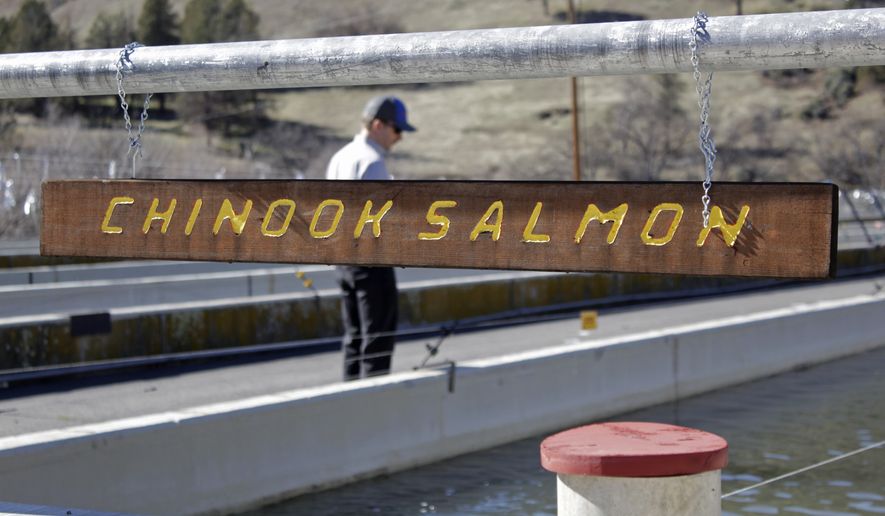A plan to save migratory salmon by demolishing four hydroelectric dams on California’s Klamath River got backing from the Federal Energy Regulatory Commission Friday.
FERC released the final version of the environmental impact statement evaluating the dam demolition plan. FERC commissioners will vote on whether or not to implement the plan later this year.
The dam’s operators filed an application to surrender the Lower Klamath Hydroelectric Project on Nov. 17, 2020. The project rests on 400 acres of federal land in Oregon and California, and consists of the Copco 1, Copco 2, Iron Gate, and J.C. Boyle Dams.
“Commission staff recommends approval of the proposed license surrender, decommissioning and removal of the project,” the abstract of the environmental impact statement reads.
These dams were originally licensed by FERC in 1954; new guidelines suggested in 2007 would have forced dam operator PacifiCorp to provision fish passages as part of relicensing the dam going forward.
“PacifiCorp determined that implementing those conditions would require operating the project at a loss,” prompting the surrender application, according to a statement from FERC.
The hydroelectric project essentially cut the river in half, and low flows and rising temperatures have cratered the salmon population on the river.
“Coho salmon from the river are listed as threatened under federal and California law, and their population has fallen by anywhere from 52% to 95%. Spring chinook salmon, once the Klamath Basin’s largest run, have dwindled by 98%,” according to the Associated Press.
The FERC report also notes permanent economic benefits resulting from dam demolition.
“Dam removal and restoration would have beneficial effects on income from commercial fishing, subsistence fishing, ocean and in-river recreational fishing, riverine recreation, and tourism,” the environmental impact statement reads.
Dam operator Pacificorp has few objections; retrofitting the aging infrastructure to match current California and federal environmental laws would likely cost more than the dams deliver in energy profits.
“PacifiCorp would likely have to spend hundreds of millions of dollars to retrofit the structures to comply with today’s environmental laws. As it is, the utility has said the electricity generated by the dams no longer makes up a significant part of its power portfolio,” according to the AP.
Local tribes, whose cultures place importance on the river and the salmon runs there, applauded the FERC report.
“We can see the light at the end of the dam removal tunnel,” Karuk tribal chairman Russell Attebery said in a statement released jointly with the Yurok tribe.
Nonprofits also hailed the environmental impact statement.
“Dam removal is a prerequisite for restoring and revitalizing the Klamath Basin. It’s the single greatest thing we can do to restore Klamath fisheries, bolster local economies, and improve water quality,” Brian Johnson of nonprofit Trout Unlimited said in the Yurok-Karuk statement.
Amy Cordalis of the Ridges to Riffles Conservation Fund, herself a Yurok tribal member and fisherwoman, said in the statement that “This critical regulatory step is necessary for the United States to honor its legal obligations and uphold its trust responsibility to Klamath River Tribes.”
The removal of the dams would take place on the main “stem” of the Klamath River, and salmon recovery would also rely on healthy riverine tributaries.
“Even with dam removal on the main stem of the Klamath, we still need healthy tributaries. But relief is on the way for these fish,” said Craig Tucker, natural resources consultant for the Karuk tribe, according to Courthouse News.
• Brad Matthews can be reached at bmatthews@washingtontimes.com.




Please read our comment policy before commenting.